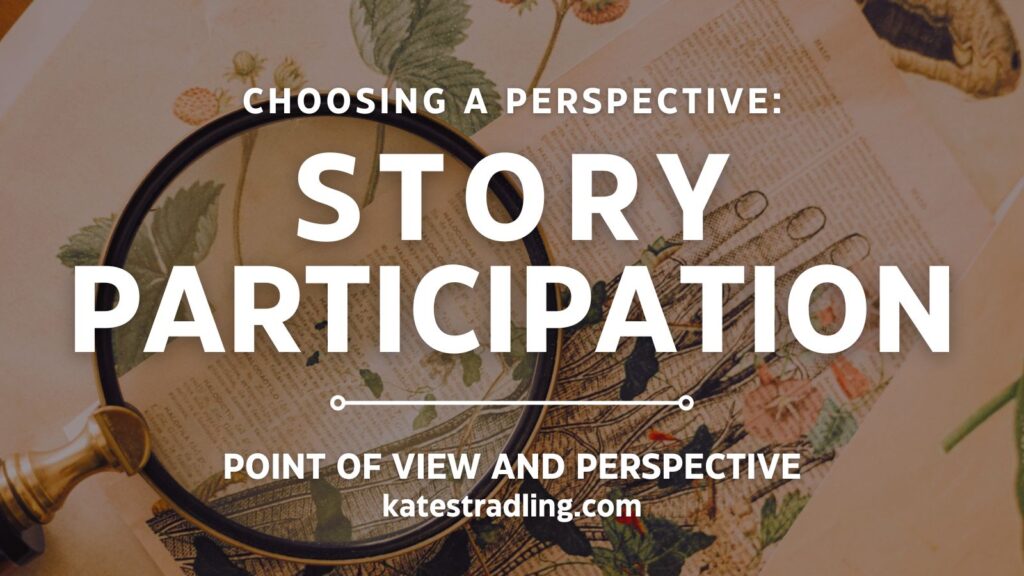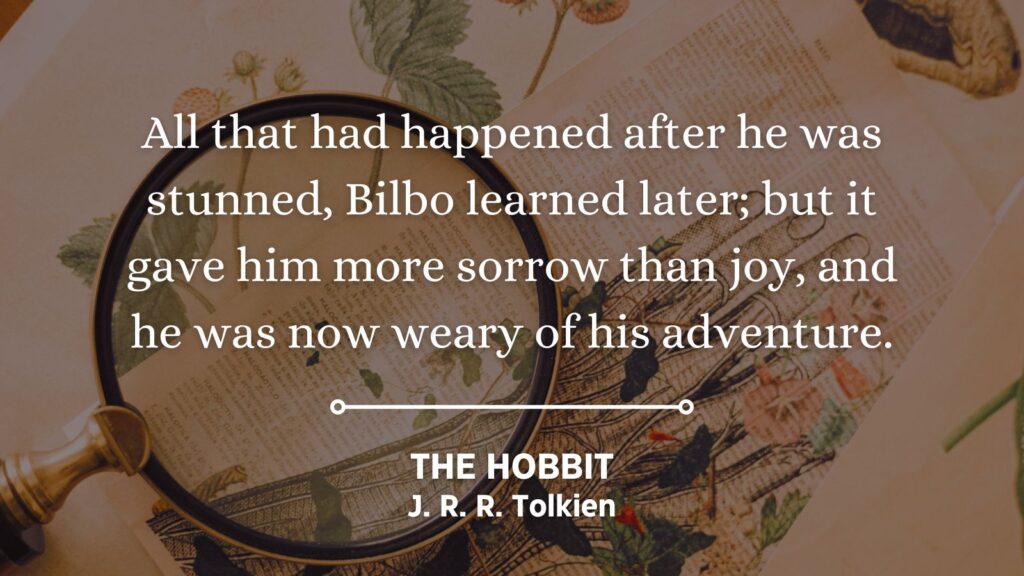Story Participation is possibly the easiest of our five considerations when choosing a story’s perspective. As its name implies, it revolves around how central a Viewpoint Character candidate is to vital plot events.

When considering this topic, here is the question to ask:
- Is my desired Viewpoint Character present in all scenes that the Reader needs to understand the plot and/or its resolution?
If the answer is YES, you have an intrinsically good Viewpoint candidate and can choose your perspective from any combination of Point of View styles and techniques.
If the answer is NO, several options come into play.
Option #1: Select a POV style not dependent on a single Viewpoint Character.
1a. Omniscient Narration
This style allows your story to jump from one scene to another without regard for who is present.
Example: THE HITCHHIKER’S GUIDE TO THE GALAXY by Douglas Adams. While the initial chapters seem to set up Arthur Dent as the Main/Viewpoint Character, the story ends up following an ensemble cast. It also bounces into scenes—past and present—in which none of the Heart of Gold passengers are present.
1b. Dual or Multiple POV
Adding an extra Point of View (or two, or three) will cover perspective gaps in the broader narrative.
Example: THE GILDED WOLVES by Roshani Chokshi. This historical fantasy heist switches between four Viewpoint Characters, with a bonus fifth at the end. Each character helps the Reader unravel the puzzle of their story adventures.
Basically, Option #1 circumvents the Story Participation requirement. An opt-out, if you will.
Option #2: Use a summary technique.
2a. The Panoramic Method
This enables summaries of story events that a Viewpoint Character misses.
Example: THE HOBBIT by J. R. R. Tolkien. Bilbo Baggins gets knocked out cold and sleeps through most of the Battle of Five Armies. He wakes up after the conflict is over. The Narrator later provides an overview of what happened while he slept.

2b. The Epistolary Method
This technique also enables summaries of story events, but through correspondence or reports instead of narrative overview.
Example: EMMA by Jane Austen. Frank Churchill writes Mrs. Weston a wall-of-text letter to account for his behavior throughout the book. She forwards it to Emma, which is how the Reader learns its contents as well.
Option #2 fulfills the Story Participation requirement by informing your absent Viewpoint Character (and thus your Reader) of the items they missed.
Option #3: Make the absence a feature, not a fault.
The open ending
This narrative choice leaves the Reader to interpret unexplained events and unresolved plot threads themselves.
Example: FIRE AND HEMLOCK by Diana Wynne Jones. Polly doesn’t fully understand what’s happening between Laurel and Tom. In the climax of the book, she’s so focused on saving him that she doesn’t witness the fate of their onlookers. Neither does the Reader. The book ends abruptly, leaving its resolution up for interpretation.
Note: the Open Ending is a legit stylistic choice, but it can frustrate Readers. If using, dig in your heels and stand by your decision. You are a literary artisan!
Option #3 fulfills the Story Participation requirement by making narrative omission an essential part of the story experience. It requires, however, a very deliberate effort in story-craftsmanship, or else it just feels sloppy.
Option #4: Go back to the drawing board.
Plot revision
This is the nuclear option. If your desired Viewpoint Character isn’t present for all the necessary events and you want the benefits and boundaries of Limited Omniscience, revise or rearrange those events.
Example: I got nothing. Revision happens behind the scenes, and I’m not privy to any works where an author has done this.1 Still, it’s certainly possible to revise a work according to the presence of one’s Viewpoint Character(s), which is why this option makes the list.
Option #4 is for character-driven stories. Ultimately, the Viewpoint Character is the story, so their participation is paramount.
Conclusion
Story Participation might be the most obvious of considerations when choosing a perspective, but the process of examining it can open a multitude of narrative possibilities.
Up next: Desired Proximity
Previous: Choosing a Perspective: An Introduction
Index Page: Point of View
- Other than my own, but I don’t use my own work for craft examples, because I’m not an objective party to its successes or failures. ↩︎